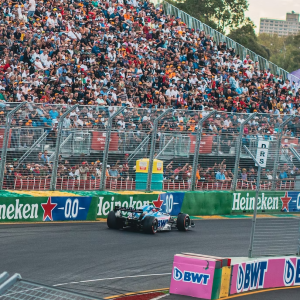KEY PLAYERS IN THE AUSTRALIAN TRAVEL INDUSTRY BOMBARDED OUR NEWS CYCLE LAST WEEK WITH THEIR ANNUAL WRAP-UP OF THE YEAR’S FINANCIAL RESULTS.
Those who are not blessed with a degree in finance  would be forgiven for struggling to interpret the real-world meaning behind the numbers. We know we spent an embarrassingly large chunk of time Googling various acronyms while giving you updates on the various losses and profits that made it to our newsletter lineups.
would be forgiven for struggling to interpret the real-world meaning behind the numbers. We know we spent an embarrassingly large chunk of time Googling various acronyms while giving you updates on the various losses and profits that made it to our newsletter lineups.
So, what do the FY22 results released so far mean for the travel industry as a whole? We asked Finder’s travel expert Angus Kidman for the main takeaways.
Qantas marked its third year of losses, recording an underlying loss before tax of $1.86 billion for FY22, slightly worse than its FY21 loss of $1.83 billion.
“Qantas’ big headline loss was expected – it’s been flying at a fraction of capacity while costs have boomed,” Kidman said, noting the appreciated but messy rollout of the airline’s $50 ‘apology’ vouchers and status extensions.
“Qantas still has work to do to regain the trust of travellers who have suffered through waves of cancellations and lost luggage.”
The real stand out for Kidman was the huge growth in members for Qantas’ loyalty program, which grew by 1 million across the pandemic.
“For frequent flyers, that’s mixed news, as it means even more competition for those precious reward seats. For Qantas, it’s a welcome source of predictable revenue,” he said.
Air New Zealand, which is obviously not an Australian company but still carries weight in the Australian travel industry, also recorded a significant loss of $528.5 million, for similar reasons to Qantas.
What’s interesting here, Kidman points out, is the airline’s aim to reach 80 per cent of its pre-COVID capacity in the next year, reflecting New Zealand’s later border opening.
Despite also recording a loss, Rex used the release of its results to gloat about its strong on-time performance in comparison to its domestic rivals.
“The features of its planned frequent flyer program will be key to seeing if it can maintain a presence in the corporate travel sector,” Kidman noted.
As for Flight Centre, which recorded a “modest” second-half profit, despite a before-tax loss of $377.8 million, Kidman said its reliance on geographic diversity and the rapid growth of its online operations in Australia to return to profitability may prove risky.
The main takeaway from the results that have been released so far, according to Kidman, is that recovery has been slower than planned.
“On the whole, it’s not progressing as fast as we might like, evident in Qantas’ and Air New Zealand reducing scheduled through to early 2023 and Qantas’ New York flights not restarting until June next year,” he said.
However, he noted that pent-up demand for travel remains high, with Finder’s Consumer Sentiment Tracker showing that 57 per cent of Australians plan to travel in the next 12 months.

















